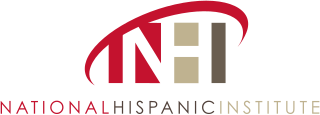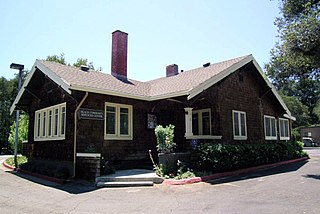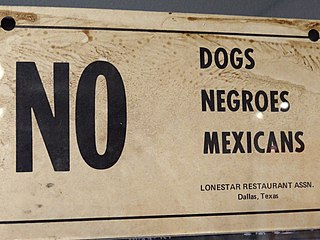
Brown University is a private Ivy League research university in Providence, Rhode Island. It is the seventh-oldest institution of higher education in the United States, founded in 1764 as the College in the English Colony of Rhode Island and Providence Plantations. One of nine colonial colleges chartered before the American Revolution, it was the first U.S. college to codify that admission and instruction of students was to be equal regardless of the religious affiliation of students.

Mentorship is the patronage, influence, guidance, or direction given by a mentor. A mentor is someone who teaches or gives help and advice to a less experienced and often younger person. In an organizational setting, a mentor influences the personal and professional growth of a mentee. Most traditional mentorships involve having senior employees mentor more junior employees, but mentors do not necessarily have to be more senior than the people they mentor. What matters is that mentors have experience that others can learn from.
The term "person of color" is primarily used to describe any person who is not considered "white". In its current meaning, the term originated in, and is primarily associated with, the United States; however, since the 2010s, it has been adopted elsewhere in the Anglosphere, including relatively limited usage in the United Kingdom, Canada, Australia, Ireland, South Africa, and Singapore.
Ethnic studies, in the United States, is the interdisciplinary study of difference—chiefly race, ethnicity, and nation, but also sexuality, gender, and other such markings—and power, as expressed by the state, by civil society, and by individuals.

La Unidad Latina, Lambda Upsilon Lambda Fraternity, Inc. is a Latino-based collegiate fraternity. It was founded at Cornell University in Ithaca, New York on February 19, 1982, and has 78 active undergraduate chapters and sixteen graduate alumni professional chapters in universities and cities across the United States.

Legacy preference or legacy admission is a preference given by an institution or organization to certain applicants on the basis of their familial relationship to alumni of that institution. It is most controversial in college admissions, where students so admitted are referred to as legacies or legacy students. The practice is particularly widespread in the college admissions in the United States; almost three-quarters of research universities and nearly all liberal arts colleges grant legacy preferences in admissions.
Asian American Studies is an academic field originating in the 1960s, which critically examines the history, issues, sociology, religion, experiences, culture, and policies relevant to Asian Americans. It is closely related to other Ethnic Studies fields, such as African American Studies, Latino Studies, and Native American Studies.

The National Hispanic Institute (NHI) is an international nonprofit organization dedicated to serving the future leadership needs of the global Hispanic community. Founded in 1979 in the State of Texas with the mission of serving the future leadership needs of the United States via the Hispanic/Latino community, NHI became the largest Latino youth organization in the United States. NHI is now an international organization with over 85,000 alumni worldwide and a well-known consortium of notable colleges and universities.
E-mentoring is a means of providing a guided mentoring relationship using online software or email. It allows participants to communicate at their own convenience and beyond time zones since it eliminates the need for them to be in the same physical location. Its programs are often developed to enhance morale, increase productivity, and promote career development.
Peer mentoring is a form of mentorship that usually takes place between a person who has lived through a specific experience and a person who is new to that experience. An example would be an experienced student being a peer mentor to a new student, the peer mentee, in a particular subject, or in a new school. Peer mentors are also used for health and lifestyle changes. For example, clients, or patients, with support from peers, may have one-on-one sessions that meet regularly to help them recover or rehabilitate. Peer mentoring provides individuals who have had a specific life experience the chance to learn from those who have recovered, or rehabilitated, following such an experience. Peer mentors provide education, recreation and support opportunities to individuals. The peer mentor may challenge the mentee with new ideas, and encourage the mentee to move beyond the things that are most comfortable. Most peer mentors are picked for their sensibility, confidence, social skills and reliability.

In the United States, affirmative action consists of government-mandated, government-approved, and voluntary private programs granting special consideration to groups considered or classified as historically excluded, specifically racial minorities and women. These programs tend to focus on access to education and employment in order to redress the disadvantages associated with past and present discrimination. Another goal of affirmative action policies is to ensure that public institutions, such as universities, hospitals, and police forces, are more representative of the populations they serve.

A Hispanic-serving institution (HSI) is defined in U.S. federal law as an accredited, degree-granting, public or private nonprofit institution of higher education with 25% or higher total undergraduate Hispanic or Latino full-time equivalent (FTE) student enrollment. In the 2021–22 academic year, 572 institutions met the federal criteria, up from 539 institutions in the 2018–19 academic year.

The Black Community Services Center, originally known as the Black Student Volunteer Center, was established in 1969 in response to a series of Stanford University events resulting from the assassination of Martin Luther King Jr. in April 1968. Since then, the primary goals of the BCSC have changed from being a hub of political activity to a center promoting the personal, intellectual, and professional growth of students in the Black community.
Educational Inequality is the unequal distribution of academic resources, including but not limited to school funding, qualified and experienced teachers, books, physical facilities and technologies, to socially excluded communities. These communities tend to be historically disadvantaged and oppressed. Individuals belonging to these marginalized groups are often denied access to schools with adequate resources and those that can be accessed are so distant from these communities. Inequality leads to major differences in the educational success or efficiency of these individuals and ultimately suppresses social and economic mobility. Inequality in education is broken down into different types: regional inequality, inequality by sex, inequality by social stratification, inequality by parental income, inequality by parent occupation, and many more.

Black–brown unity, variations include black-brown-unity[4][5] and black-brown-red unity,[6] is a racial-political ideology which initially developed among black scholars, writers, and activists who pushed for global activist associations between black people and brown people ,and Indigenous peoples of the Americas to unify against white supremacy, colonialism, capitalism, and, in some cases, European conceptualizations of masculinity, which were recognized as interrelated in maintaining white racial privilege and power over people of color globally.[7][8]
The Third World Liberation Front (TWLF) rose in 1968 as a coalition of ethnic student groups on college campuses in California in response to the Eurocentric education and lack of diversity at San Francisco State College and University of California, Berkeley. The TWLF was instrumental in creating and establishing Ethnic Studies and other identity studies as majors in their respective schools and universities across the United States.
Homophobia in ethnic minority communities is any negative prejudice or form of discrimination in ethnic minority communities worldwide towards people who identify as–or are perceived as being–lesbian, gay, bisexual or transgender (LGBT), known as homophobia. This may be expressed as antipathy, contempt, prejudice, aversion, hatred, irrational fear, and is sometimes related to religious beliefs. A 2006 study by the Joseph Rowntree Foundation in the UK found that while religion can have a positive function in many LGB Black and Minority Ethnic (BME) communities, it can also play a role in supporting homophobia.
The University of California, Los Angeles Asian American Studies Center (AASC) is an organization that educates students and the general public about the history of Asian American and Pacific Islanders and their experiences. The AASC is one of the leading and groundbreaking organizations to have substantial and credible resources for their research. Located in Campbell Hall, the AASC quickly became a center for resource-gathering and scholarship for the Asian American movement. Asian American student organizations at CSULA, Occidental, USC, and other colleges soon followed. It was a vital hub and training ground for young activists, a place where they could earn a salary while doing community work.

Proposition 16 is a California ballot proposition that appeared on the November 3, 2020, general election ballot, asking California voters to amend the Constitution of California to repeal Proposition 209 (1996). Proposition 209 amended the state constitution to prohibit government institutions from considering race, sex, or ethnicity, specifically in the areas of public employment, public contracting, and public education. Therefore, Proposition 209 banned the use of race- and gender-based affirmative action in California's public sector and public university admissions.
According to the National Science Foundation (NSF), women and racial minorities are underrepresented in science, technology, engineering, and mathematics (STEM). Scholars, governments, and scientific organizations from around the world have noted a variety of explanations contributing to this lack of racial diversity, including higher levels of discrimination, implicit bias, microaggressions, chilly climate, lack of role models and mentors, and less academic preparation.











